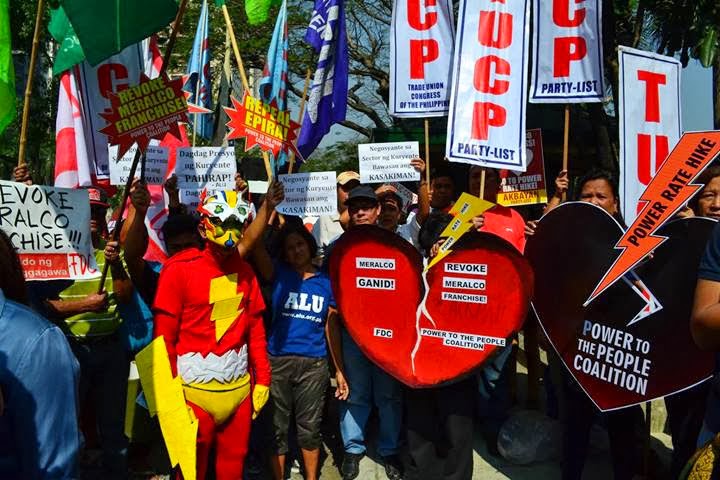AS the power situation in Luzon remains tight, the Trade Union Congress of the Philippines (TUCP) warned that the power crisis may force businesses to shut down.
The group is scheduled to meet on Wednesday with various business and labor groups to draw up measures amid adverse ramifications of the energy problem on employment and business stability.
“We have no national strategy to address the looming power crisis. So, the TUCP, other labor groups, consumer and business organizations will meet on Wednesday with the aim of figuring out a recommendation to the government on how to minimize the impact of a full-blown power crisis precluded by prolonged rotational brownouts currently prevailing in many key areas Luzon and in Mindanao,” TUCP Executive Director Louie Corral said on Monday.
The TUCP “wants the government to be prepared when the perfect storm caused by lack of power policy hits the country because it’s the workers who’ll be whipped hard when the storm comes,” Corral added.
Even before Typhoon Glenda hit the country last week, he said, his group had urged Energy Secretary Jericho Petilla to declare a national emergency on power “so that collectively we can come up with the right solutions.”
Petilla recommended the declaration to Malacanang on Monday.
“The fate of all industry roadmaps, particularly the employment targets, is dependent on how we address the power crisis right now.
We need a truthful picture of our future power supply so that we can come up with clear strategies and coping mechanisms and avert companies shutting down and retrenchments of workers. A flawed power industry roadmap will be fatal to the economy. We cannot afford to hinge on the day-to-day weather predicament the fate of the employment of millions of workers,” Corral said.
“Without sufficient and affordable power, there will be no investors and there will be no new jobs,” he added.
The TUCP urged the government to temporarily return to power generation business “until there is sufficient supply to restore business confidence, a return to tariff-setting based on 12 percent cap return-on-rate-base (RORB) to bring down the electricity prices to make the country regionally competitive.”
The group noted that the Philippines has one of the highest electricity rates in the world, which makes the country unattractive to new investments that create quality jobs. This, it said, resulted in static unemployment of 3.046 million in April 2013 and 2.924 million in April 2014.
If the rotating brownouts being imposed by the Manila Electric Co. (Meralco) continues, the TUCP said it is possible that thousands of employees may lose their jobs.
Meralco also on Monday said electricity would have been fully restored in Metro Manila on Sunday but that some areas in nearby provinces will continue to be without power because distribution lines damaged by Typhoon Glenda had not been fixed.
Joe Zaldarriaga, Meralco spokesman, said the company has doubled efforts to restore power in their franchise area.
Also as of Monday, 4.99 percent of the distribution utility’s franchise still had no electricity.
“We hope to close the gap [for Metro Manila] within today. For the franchise area, we cannot say, but we have an internal deadline,” Zaldarriaga told reporters.
He said they are fixing transmission lines in the provinces of Laguna, Cavite, Batangas and Quezon but that it will take time to fully restore power in these provinces.
“These are isolated areas [where] we lost supply because we still have to re-string the lines and fix our transformers after they were devastated by the typhoon,” Zaldarriaga added.
Petilla said the power deficit has narrowed down after the 250-megawatt unit of Santa Rita plant kicked in. The energy situation is expected to improve when four power plants will start feeding the Luzon grid within the week.
These plants are San Lorenzo, Pagbilao 1 and 2, Calaca and BacMan. -
Manila Times



